TRACKER BEACONS

Skiing or snowboarding in unchartered territories without a tracker beacon? Bad idea! Because a tracker beacon, in the case of an avalanche, multiplies your chances to survive. This is why, alongside shovel, probe and airbag, a tracker beacon should be a firm component of your safety equipment, so that entombed people can be found as quickly as possible under an avalanche.


- - 18 %
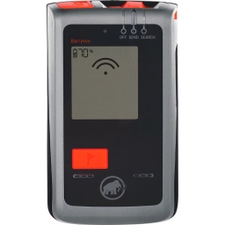 MammutBarryvox Tracker Beacon EuropeMSRP 339,95 €279,95 €One size
MammutBarryvox Tracker Beacon EuropeMSRP 339,95 €279,95 €One size
- - 20 %
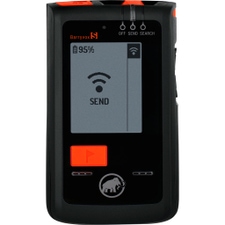 MammutBarryvox S Europe Tracker BeaconMSRP 449,95 €359,95 €One size
MammutBarryvox S Europe Tracker BeaconMSRP 449,95 €359,95 €One size - - 32 %
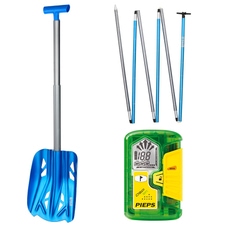 PiepsDSP Sport + LACD Snow 2.0 + Avalanche Express 2.0 LVS-Set (Tracker Beacon + Probe + Shovel)MSRP 369,85 €249,95 €One size
PiepsDSP Sport + LACD Snow 2.0 + Avalanche Express 2.0 LVS-Set (Tracker Beacon + Probe + Shovel)MSRP 369,85 €249,95 €One size - - 23 %
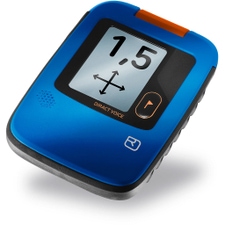 OrtovoxDiract Voice Tracker Beacon Blue OceanMSRP 389,95 €299,95 €One size
OrtovoxDiract Voice Tracker Beacon Blue OceanMSRP 389,95 €299,95 €One size
- - 32 %
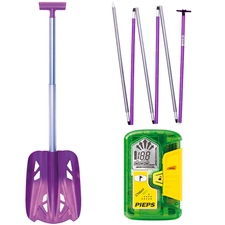 PiepsDSP Sport + LACD Snow 2.0 + Avalanche Express 2.0 LVS-Set (Tracker Beacon + Probe + Shovel)MSRP 369,85 €249,95 €One size
PiepsDSP Sport + LACD Snow 2.0 + Avalanche Express 2.0 LVS-Set (Tracker Beacon + Probe + Shovel)MSRP 369,85 €249,95 €One size - - 21 %
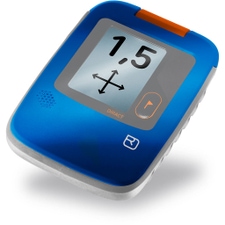 OrtovoxDiract Tracker Beacon Blue OceanMSRP 329,95 €259,95 €One size
OrtovoxDiract Tracker Beacon Blue OceanMSRP 329,95 €259,95 €One size
- - 14 %
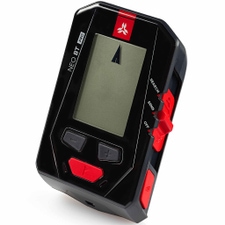 ArvaNeo BT Pro Tracker BeaconMSRP 349,95 €299,95 €One size
ArvaNeo BT Pro Tracker BeaconMSRP 349,95 €299,95 €One size - - 19 %
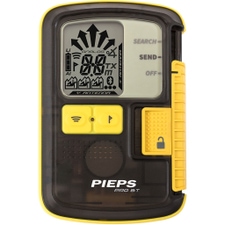 PiepsPro BT Tracker BeaconMSRP 419,95 €339,95 €One size
PiepsPro BT Tracker BeaconMSRP 419,95 €339,95 €One size - - 9 %
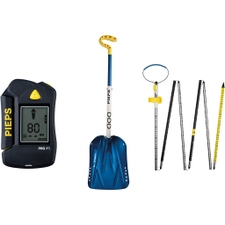 PiepsTested product Pro IPS Tracker-Set (Beacon + Shovel + Probe)MSRP 549,95 €499,95 €One size
PiepsTested product Pro IPS Tracker-Set (Beacon + Shovel + Probe)MSRP 549,95 €499,95 €One size - - 13 %new
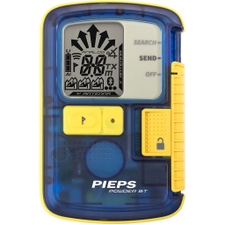 PiepsPowder BT Tracker Beacon 0000MSRP 319,95 €279,95 €One size
PiepsPowder BT Tracker Beacon 0000MSRP 319,95 €279,95 €One size - - 16 %new
 Black DiamondRecon X Beacon Tracker Beacon No ColorMSRP 319,95 €269,95 €One size
Black DiamondRecon X Beacon Tracker Beacon No ColorMSRP 319,95 €269,95 €One size 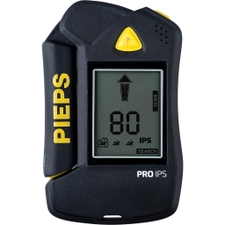 PiepsPro IPS Interference Protection Tracker Beacon 0000479,95 €One size
PiepsPro IPS Interference Protection Tracker Beacon 0000479,95 €One size- - 13 %
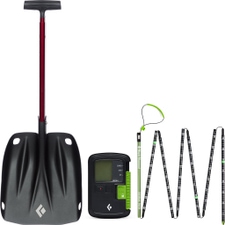 Black DiamondRecon X Avy Tracker-Set (Beacon + Shovel + Probe)MSRP 399,95 €349,95 €One size
Black DiamondRecon X Avy Tracker-Set (Beacon + Shovel + Probe)MSRP 399,95 €349,95 €One size - - 10 %
 BCABC Link Mini EU Avalanche Safety Accessories OrangeMSRP 99,95 €89,95 €One size
BCABC Link Mini EU Avalanche Safety Accessories OrangeMSRP 99,95 €89,95 €One size - new
 MiloAction Communication System Equinox Schwarz228,95 €One size
MiloAction Communication System Equinox Schwarz228,95 €One size - new
 MiloArmband Clip Communication System Black39,95 €One size
MiloArmband Clip Communication System Black39,95 €One size  MiloAction Communication System Miloberry Rot228,95 €One size
MiloAction Communication System Miloberry Rot228,95 €One size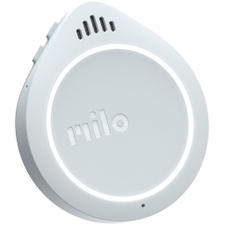 MiloAction Communication System228,95 €One size
MiloAction Communication System228,95 €One size- new
 MiloCollar Clip Communication System Black29,95 €One size
MiloCollar Clip Communication System Black29,95 €One size 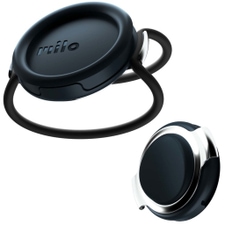 MiloBike Clip Communication System Black19,95 €One size
MiloBike Clip Communication System Black19,95 €One size


What your avalanche transceiver does – it increases the chance of survival
How does it do that? The modern avalanche transceivers are equipped with three antennas, have a search and a transmit mode. When in transmit, signals are sent via the antenna every second, lasting for 70 to 300 milliseconds. These signals do not go straight, instead they go in loops. Whoever has never worked with a transceiver before will be a bit surprised that the arrows on the display keep changing their direction. This is due to the signals which make you go in an arc and not a straight line. It will always show you the fastest way to the avalanche transceiver that is the closest.
Most avalanche transceivers are equipped with a marking function. Using these, individual signals can be suppressed. This is needed when there are multiple burials: when having found one person, one person can start digging while at the same time you can continue looking for more signals.
As of this, it is crucial to also have the rest of your safety equipment with you, because as soon as one buried person is located, he must be found using the avalanche probe and dug out with the shovel!
Lots of clothing manufacturers these days use Recco®, another tool to find buried people faster and easier. BUT Recco® can in no way replace your avalanche transceiver! Instead, it is an additional safety plus. In avalanches, speed is your friend and using your transceiver, you can start searching for burials right away. Recco®, however, requires a specific detector.

The different manufacturers and their avalanche transceivers
As with most other devices, there are some avalanche transceivers which are equipped with standard functions only, and some that have a large amount of other capabilities. As of this, most brands offer devices in different price segments. All of them show you the relative distance and the direction in which the transmitting transceiver is buried.
Many can also give you the number of sending devices located, and also mark and suppress these. In addition, there are some very professional avalanche transceivers that also give you temperature, altitude, slope gradient or can even tell you the vital functions of the buried. These are mostly used by professional ski guides and mountain rescue teams. Why? Because those that do not use these devices as much are more likely to be confused by all the extra information given. Somedevices also change from search into transmit mode after a longer time of not moving. This is a great function in case of after-avalanches!
What other differences are there? On the one side, the various brands have different search ranges. But be careful with these. Because the given ranges can not always be reached. In case of bad reception, for example, when the device lays vertically in the snow. Some brands also let you do software-updates, which obviously is of advantage in the long run. The most important factor however, is your ease of handling the device. All people cope differently well with different devices. Be it the readability of the display, handling and number of buttons, the included carrying system or other features. And the better you are in handling the avalanche transceiver, the faster you will be in locating buried people. And the less time passes, the greater the chances of survival!
This is how I use my avalanche transceiver
First of all: The transceiver is a crucial component of your safety equipment, but you certainly need to know how to properly function. As of this, we recommend you to do a safety training regularly. Also, you should always also carry the rest of your safety equipment, avalanche shovel, probe and airbag backpack.
The avalanche transceiver should always be kept close to your body, at the best in the designated carry bag. Never should it be kept in your backpack, as it can be ripped of your body in case of an avalanche. Furthermore, you should not keep it too close to your smartphone or any other electronic devices, as these can disturb the antennas’ signals. You should always make sure that the batteries have enough power left, most devices show the battery percentage when being turned on. Also, when storing the device for a longer time or over summer, you should take the batteries out as these can burst and thereby ruin your avalanche transceiver!
Before taking your skis or snowboard out into the backcountry, you need to always make an avalanche transceiver check. Here, all functions will be tested, either in form of a group check or using the check points that some ski resorts provide. In case of an avalanche, all people that are not buried need to turn their device into search mode. Next, depending on terrain, access to it and size of group, the searching process begins. The search ranges should always be held at around 20m, no matter the actual range of the device. As soon as a signal is found, the coarse search locates it and in the fine search, the buried person is found. Here, the marking function comes into play: If there are more than one victim and enough people there to start with the shoveling, the first person can be marked and you can start searching for the next one.
Read more regarding avalanche transceivers and safety equipment
- What avalanche safety equipment do I need?
- RECCO® rescue system – small technology that can help big times
- How Avalanche Backpacks Work: An Overview of Diverse Avalanche Airbag Systems
